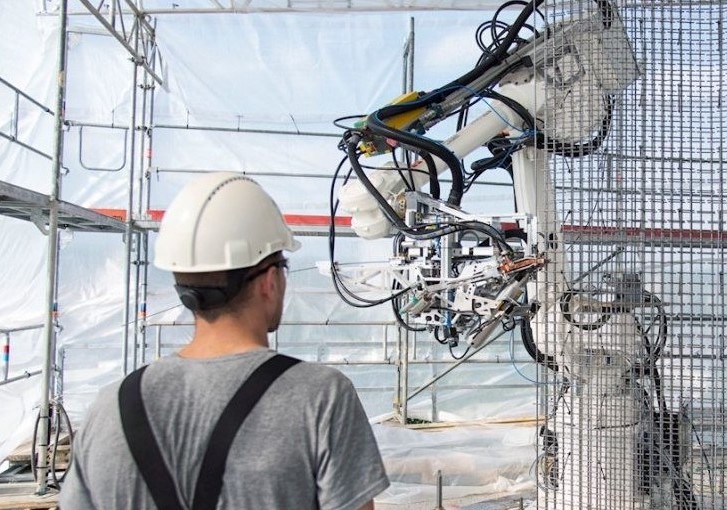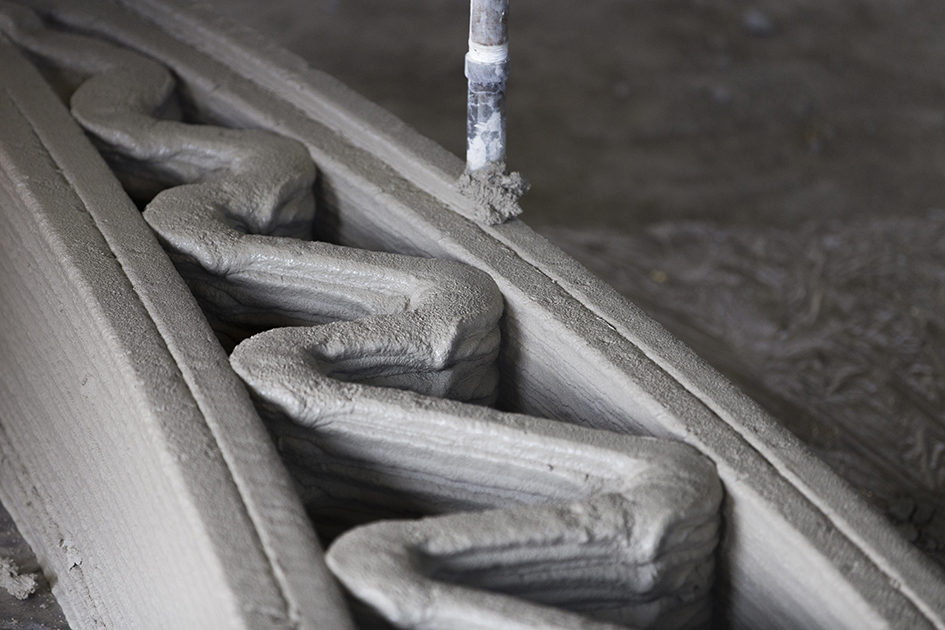Renewable energy and real estate firm Horizon Legacy Group has unveiled plans to build Canada’s “first and largest 3D printed neighborhood.”
As part of its ‘Marco Polo 100’ challenge, the company is offering $10 million to fund the R&D of any advanced technologies or building approaches, capable of erecting housing at a cost of just $100/sq ft. Having selected its contest finalists, the group is now tasking them with proving the scalability of their entries, in a final stage that could see six family homes 3D printed into a cosy waterfront community in Ontario.

Horizon Legacy’s design contest
Founded initially as a conventional house building firm, the Horizon Legacy Group has changed its approach over the last decade to focus more on green energy and construction technologies. In doing so, the company has increasingly begun to develop solar, wind and water power-generating technologies, and attempted to seek out new approaches to building sustainable eco-friendly real estate.
According to the group, the construction industry is making “very little progress” when it comes to house building processes, and many firms still use “century-old technologies.” To help accelerate the sector’s adoption of digital techniques, the Horizon Legacy Group has therefore set up its ‘Marco Polo 100’ contest, through which it aims to develop approaches that represent a “qualitative leap” for the industry.
Opened in October last year to designers, start-ups and industry pros alike, the competition’s first phase received 3D printing and robotics-based entries from more than 400 people in 60 countries. Having been assessed by a 12-member jury, with construction, 3D printing and engineering expertise, these approaches have now been whittled down to just six, which will enter initial trials over the next year.
The ‘Marco Polo 100’ finalists
Horizon Legacy Group has chosen its finalists based on criteria that are designed to reward those processes that yield “livable and appealing” housing, and are compliant with Canadian building regulations. Prior to selection, teams had to submit a cohesive work plan, covering the predicted cost and schedule for creating both a small prototype, and a more substantive multi-storey build in Ontario.
Submissions were then reviewed by a housing code consultant, which provided teams with feedback, and marked their entries based on time, cost, compliance, scalability, aesthetics and creativity. Of these, just ten made it through to validation and due diligence checks, and following follow-up questions and inspections, six finalists were selected last month.
Winning designs included the ‘Scoolpt’ from the Czech Republic, ‘O-Cube’ from Canada and ‘Hivetat’ from the USA, as well as entries from CyBe, Imprimere and UBB Chile, from the Netherlands, Switzerland and Chile respectively. Details of all six entries have now been published ahead of the contest’s final, via a series of profile videos that reveal the different backgrounds and approaches to teams’ designs.

For instance, the Scoolpt team is made up of designers and artists, with the bold ambition of creating a “sculpture that can be entered,” while the O-Cube is actually an entire modular construction system. CyBe, meanwhile, has provided little detail on its entry, but the firm has a strong background in the field, having agreed to 3D print a house in the UAE, and it’s now supporting the build of Britain’s HS2 network.
In terms of the competition’s final, all six entrants have agreed to work with Canadian architects to finalize their designs, obtain a local building permit and erect a small prototype structure. Judged on the same criteria as before, the resulting structures could then be narrowed down to just one approved build, although the Horizon Legacy Group has left the door open for each of the six designs to be realized.
Once these designs have gained the local approval needed, they’re then set to enter final construction from August 2022 in Gananoque, a small 5000-strong rural community. Overall, the contest’s backers hope that it “showcases innovative construction technologies,” and yields a process that “improves the efficiency and productivity” of house building while reducing the cost of homes for buyers.
AM’s sustainable communities
As the scalability of construction 3D printing continues to improve, the technology is beginning to allow firms to move beyond single-home builds, into additive manufactured communities. In March 2021, Californian start-up Mighty Buildings unveiled plans to 3D print fifteen eco-friendly homes, at a commercial five-acre site near Coachella Valley.
At the time, the company claimed that deploying its ‘Mighty Building Kit’ could enable it to eliminate up to 99% of construction waste during the build. In the past, Texan firm ICON has achieved a similar feat, 3D printing a housing community for low-income families in Mexico, which has started at two buildings, but could reach fifty by the time it’s finished.
Likewise, the PERI Group has increasingly scaled its use of COBOD’s construction systems, and earlier this year, it finished utilizing them to 3D print a three-storey apartment building. Built in the Bavarian town of Wallenhausen, the house is expected to be split into five apartments, and listed on the German rental market.
To stay up to date with the latest 3D printing news, don’t forget to subscribe to the 3D Printing Industry newsletter or follow us on Twitter or liking our page on Facebook.
For a deeper dive into additive manufacturing, you can now subscribe to our Youtube channel, featuring discussion, debriefs, and shots of 3D printing in-action.
Are you looking for a job in the additive manufacturing industry? Visit 3D Printing Jobs for a selection of roles in the industry.
Featured image shows an engineer using a robotic arm-mounted construction system. Photo via the Horizon Legacy Group.


